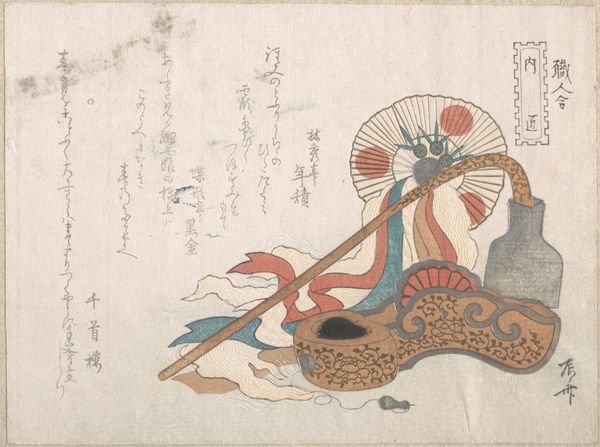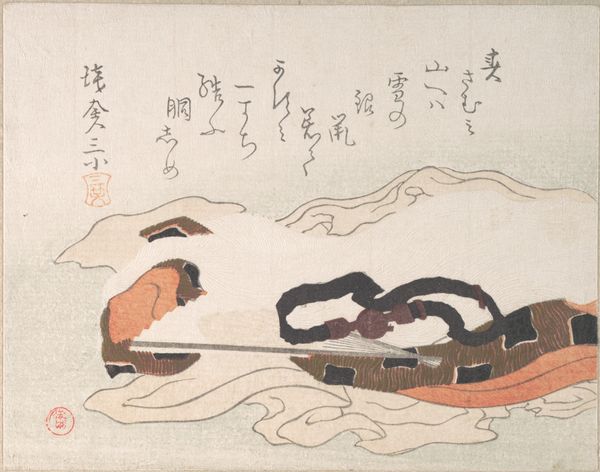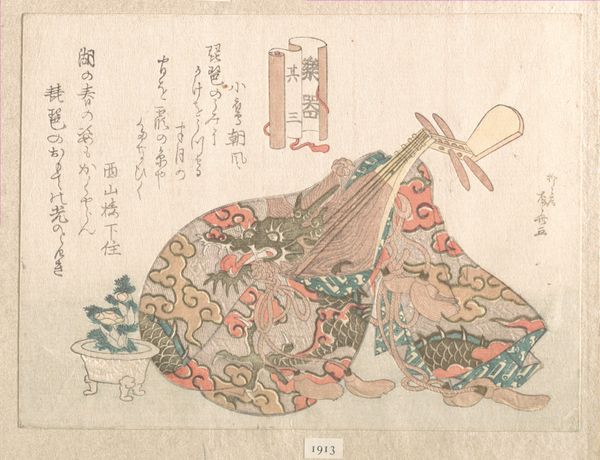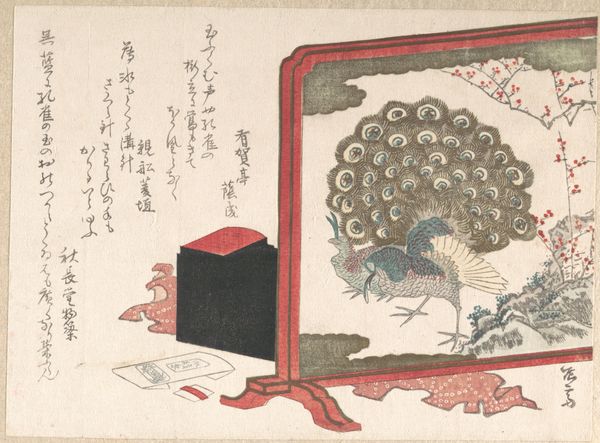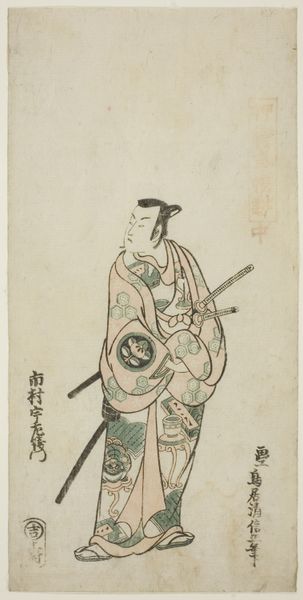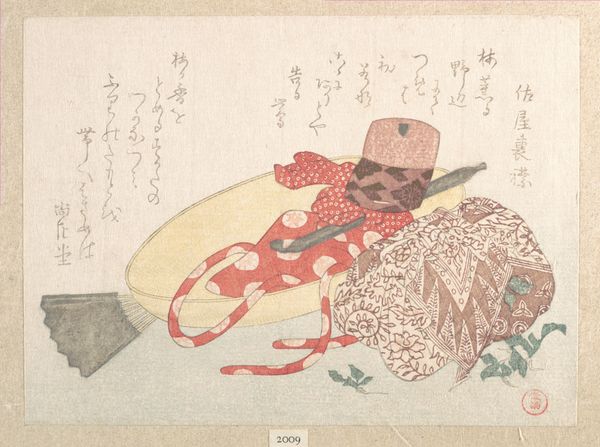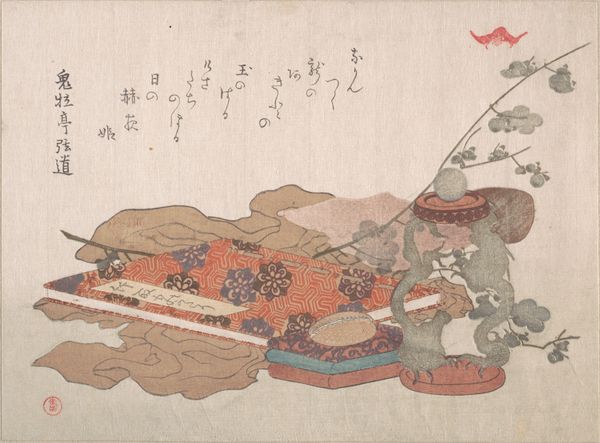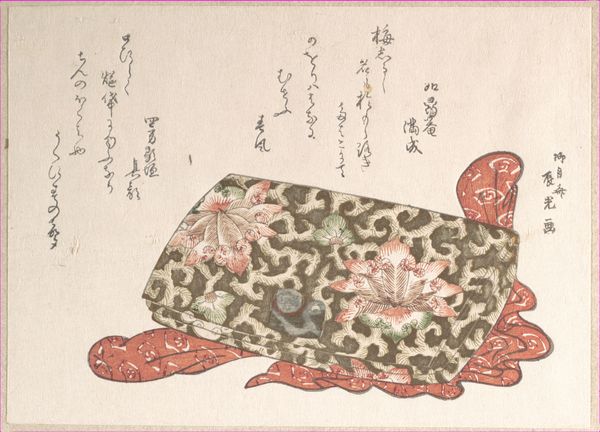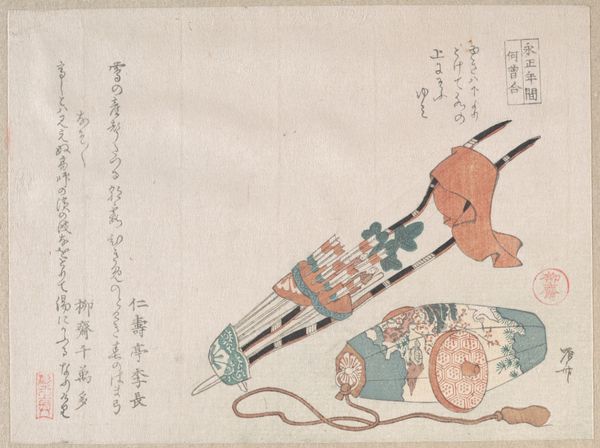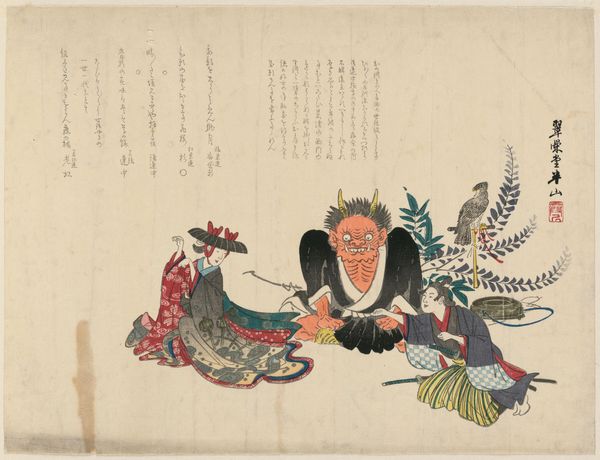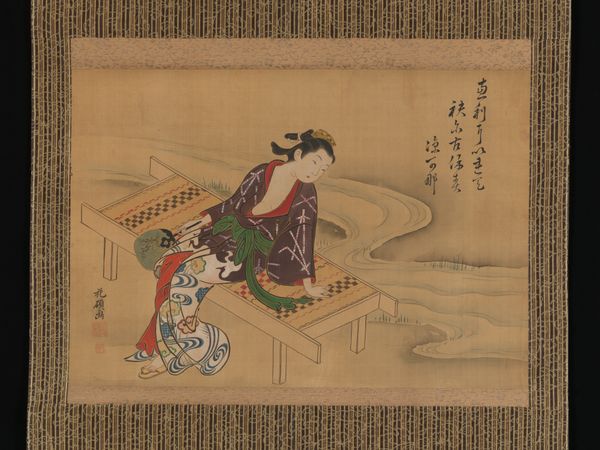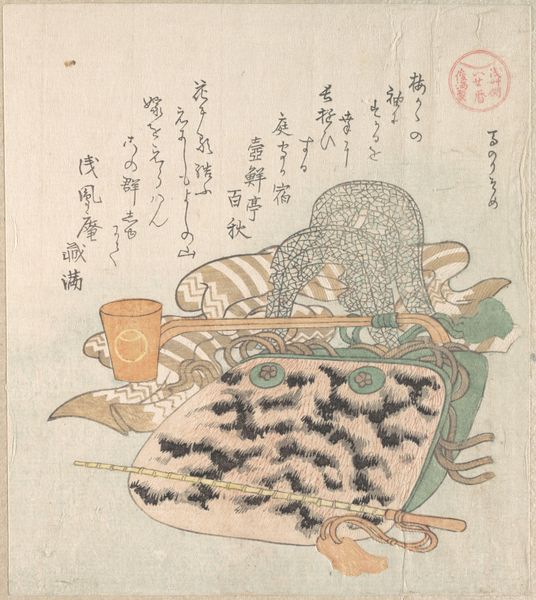
# print
#
asian-art
#
ukiyo-e
Dimensions: 5 5/8 x 7 1/2 in. (14.3 x 19.1 cm)
Copyright: Public Domain
Curator: This woodblock print, dating to the 19th century, is by Ryūryūkyo Shinsai and is titled "Fan, Bag and Incense-Tube." You can see it here in the Metropolitan Museum. Editor: It's delicate. Intimate even, in its portrayal of these everyday yet finely crafted objects. I'm immediately struck by the artist’s interest in texture – the paper of the fan, the fabric of the bag, the hard shell of the incense tube. Curator: Precisely. Woodblock prints like these were essential in democratizing access to imagery, reflecting a shift in artistic production for a broader consumer base. This specific print seems to represent elements related to social customs, personal adornment, and perhaps religious practice. Editor: Consider the social implications of the fan. Was this a functional item made precious by artistry, or an art object first, designed to signal wealth or status through its decoration and materiality? Curator: The materials tell a story of shifting power dynamics, too. Who had access to the finest pigments and paper? The printing process itself became part of the artwork's meaning, a reproducible art, designed for trade and dissemination. These items move out into society and create narratives within homes. Editor: It is a print; made to spread an idea and reach a broader segment of the population with the art. Looking at that fan again, its open form draws attention to its functionality, but it's surrounded by layers of meticulous crafting which ultimately elevated it into something of aesthetic value as well. Curator: And look at the design of the incense tube, covered in what appear to be tiny stylized flowers—possibly cherry blossoms given its creation in Japan. The craft involved! How long would this printing have taken? What kinds of paints are involved? Who oversaw the dispersal of such works into markets and homes? Editor: This work brings together functionality and symbolism; a blend central to appreciating its position within the material culture of the time. Curator: Yes, absolutely. By delving into these details, the print provides a lens for a larger history of both creation and reception. Editor: I’ll look at 19th-century Japan in an entirely new light from now on, seeing objects not as mere decoration, but as evidence of social currents and innovative means for material creativity and expression.
Comments
No comments
Be the first to comment and join the conversation on the ultimate creative platform.
